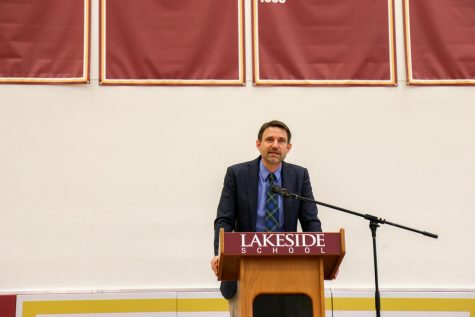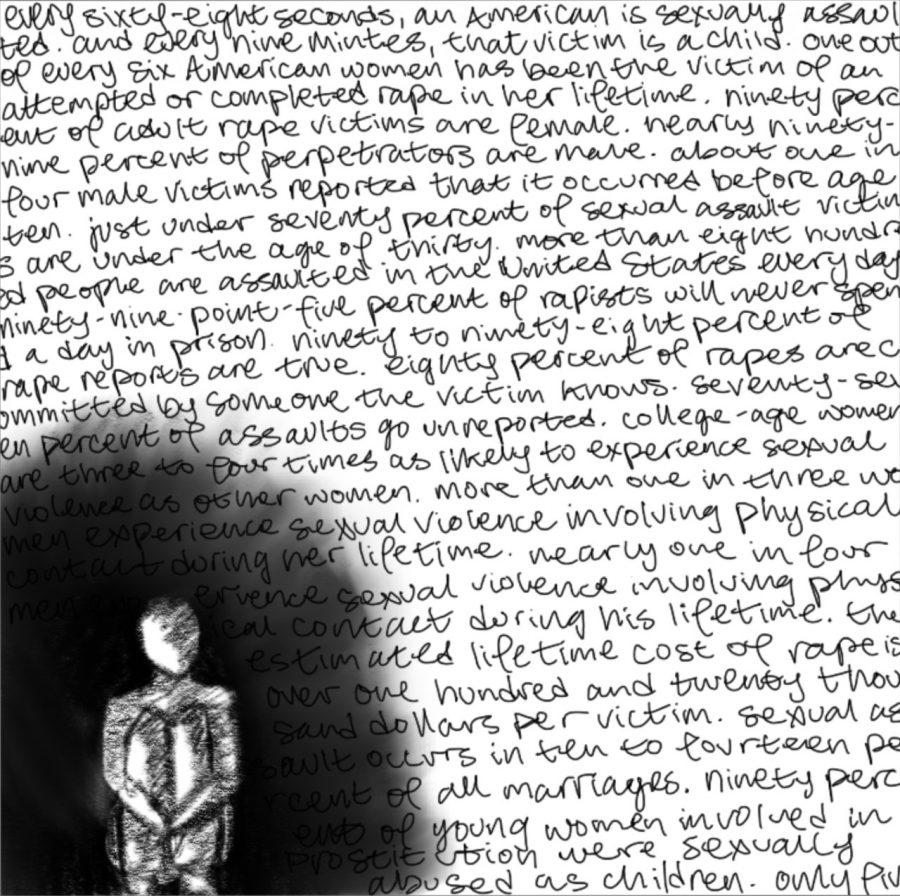Content Warning: Content Warnings
In our current society, content warnings have become increasingly common. It has been scientifically proven that those with past trauma benefit from a warning about potentially triggering subject matter, as they have the opportunity to avoid unexpectedly witnessing content that brings up negative experiences. Lakeside has recognized the necessity of content warnings, and is working to include them at assemblies and throughout the curriculum. So why are students still unhappy, and how can that displeasure be rectified?
Firstly, some background information on content warnings. There are three parts of a content warning. The warning itself, to alert the audience; the specific aspects of the warning, so the audience knows whether or not they may be affected; and time or space to heed the warning, to make it effective. I’ve found that the content warnings Lakeside administration, teachers, and speakers give often include only one or two of the three parts. For example, in a recent assembly, award recipient Noah Bopp prefaced a story with the words “content warning” but did not detail why or allow time to exit before speaking about a triggering topic. Including all three parts is necessary, because ignoring the others renders the content warning useless.
A few weeks ago, Ms. Wilks and Mr. Noe held an irregular Monday assembly to discuss Lakeside’s sexual misconduct policy in light of the introduction of sexual violence prevention workshops. No one was notified in advance of the topic, and a content warning was not given at the start of the assembly. Sexual violence deserves a thorough content warning; in the Tatler poll, one student said that the administration “didn’t give people the information necessary for them to stay comfortable and to respect their own boundaries.” The administration heard this feedback and addressed it in an apologetic email: “We absolutely should have provided a content warning before this assembly, and we will make sure to do so moving forward.”
I was glad that they took action, or at least promised to in the future, but further steps should be taken. For example, it’s worth investigating whether students would feel comfortable leaving an assembly when a content warning is announced. Personally, I would not want to get up and leave in the middle of assembly with the entire student body watching me. A possible solution could be sending out a content warning ahead of time, which would give students the option to attend only part of the assembly or to sit it out. Content warnings should be utilized to avoid uncomfortable experiences, not to single out students, and that is an important fact to consider in the context of these situations.

Assemblies are not the only settings where content warning misuse poses an issue. Teachers often fail to warn students before covering triggering content in class, whether it is due to forgetfulness or ignorance. The content warnings that do exist are often nonspecific as to the location of the triggering content and offer no alternative activities for students who need to opt out of the assignment or activity. One poll respondent wrote that, “Lakeside teachers act as if [content warnings are] a huge hassle to put in.” This behavior makes students feel as if they’re in the wrong for a valid request. However, that’s not to say that there aren’t teachers at Lakeside upholding the standard for content warnings. Students in the poll mentioned Ms. Chu, Mr. Nau, and Ms. Yorks specifically, saying their commitment to including content warnings “makes the heavy topic matter a lot more bearable.” Once again, I am in agreement. An appropriate content warning is able to foster a respectful and considerate environment, and make an educational experience more positive. The effort of Lakeside staff is appreciated, but in this case, intent does not match impact. Content warnings are a necessity at our school, and the actions of teachers must match that expectation—feeling safe and comfortable within school should not depend on the teacher one has.
Certain members of the Lakeside community and many members of the global community are not in support of content warnings. They argue that no one is responsible for the triggers of others, and therefore content warnings need not be provided. Others add that content warnings are a form of modern censorship, and that they make audiences predisposed to negative thoughts. Although there are truthful aspects in each of these ideas, and content warnings are new and far from perfect, they are ultimately vital. This is especially applicable in an academic setting: almost 80% of poll respondents said that they feel content warnings are important, demonstrating that the student body clearly reflects a desire for their utilization at Lakeside. Even if content warnings require extra time and thought and might feel cumbersome, Lakeside must take advantage of the opportunity to support those within our community. After all, that’s the expectation.

